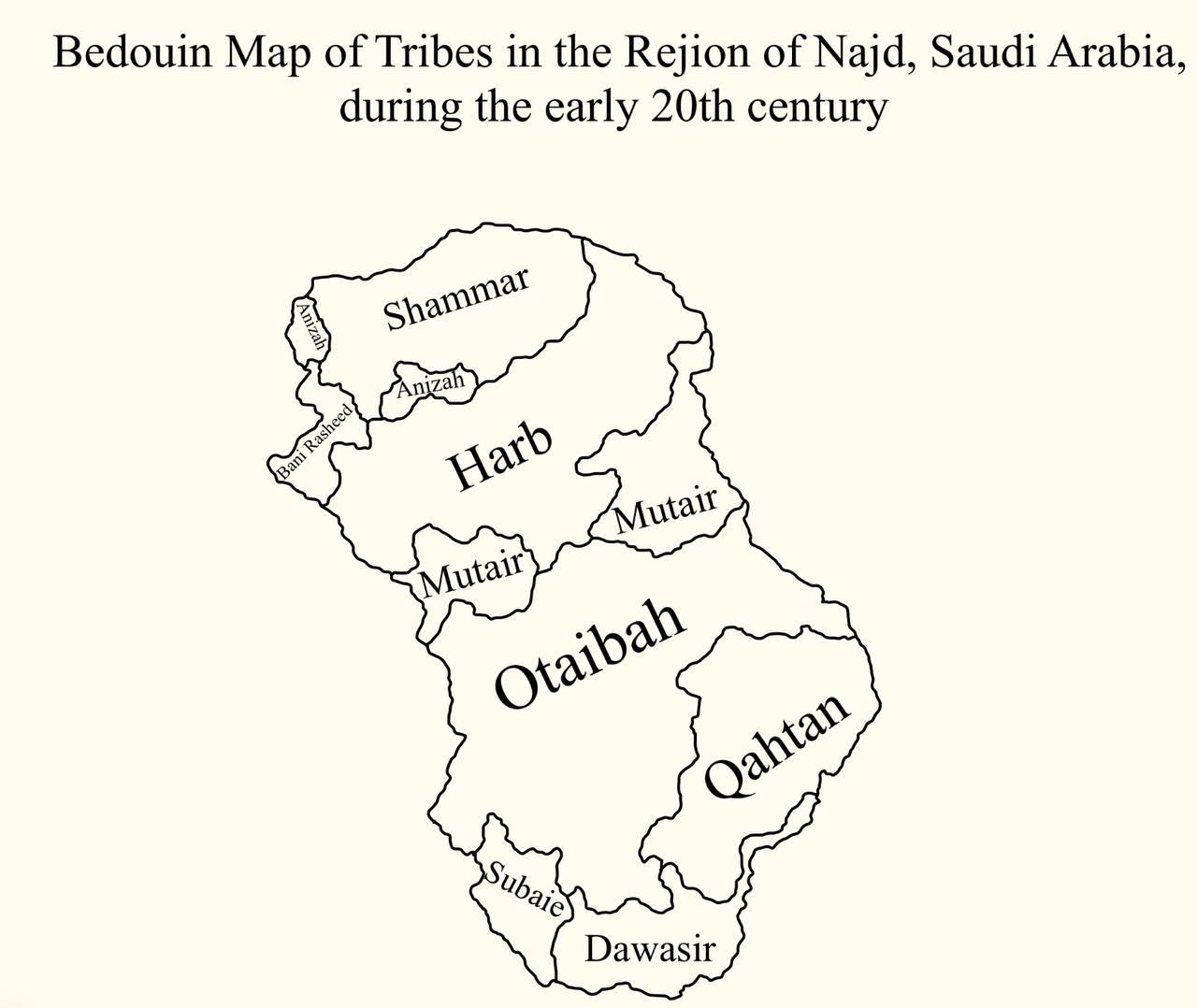Bedouin Tribes Map of Najd Region, Saudi Arabia


Alex Cartwright
Senior Cartographer & GIS Specialist
Alex Cartwright is a renowned cartographer and geographic information systems specialist with over 15 years of experience in spatial analysis and data...
Geographic Analysis
What This Map Shows
The "Bedouin Map of Tribes in the Region of Najd, Saudi Arabia, during the early 20th century" offers a comprehensive look at the distribution of various Bedouin tribes across this central region of Saudi Arabia. This visual representation highlights the intricate social fabric of the area, delineating boundaries, migration routes, and tribal affiliations. As we dive deeper into the world of the Bedouins, it's essential to understand their historical significance and the landscapes they navigate.
Deep Dive into Bedouin Tribes
The Bedouin tribes of Najd are not just a cultural group; they represent a way of life that is deeply intertwined with the harsh desert environment. Historically, these tribes are known for their nomadic lifestyle, moving across vast stretches of arid land in search of water and grazing grounds for their livestock. The early 20th century marked a time of significant transition for the Bedouins, influenced by external factors such as the discovery of oil, political changes, and modernization efforts by the Saudi state.
Interestingly, there are several prominent tribes within Najd, including the Al Saud, Al Shammar, and the Anazzah. Each tribe has its unique dialects, customs, and territorial claims. For example, the Al Saud tribe, which later established the Saudi monarchy, played a crucial role in shaping the political landscape of the region. Their influence is still felt today, making their study essential for understanding contemporary Saudi society.
The social structure of these tribes was traditionally organized around kinship ties, often extending beyond immediate family to include broader clan affiliations. This interconnectedness is crucial for survival in the harsh desert, where support from extended family networks can mean the difference between life and death. Moreover, tribal leaders, known as Shaykhs, held significant power and played vital roles in mediating conflicts and maintaining social order.
Interestingly, the tribes were also known for their intricate knowledge of the desert terrain. They developed extensive oral traditions that included poetry and storytelling, often reflecting their relationship with the land. This connection is not just cultural; it’s practical. Bedouins possess an acute understanding of the seasonal changes, animal behavior, and the geography of their territory. Such knowledge is crucial for navigation and resource management in the vast, often unforgiving Najd desert.
Regional Analysis
When analyzing the distribution of tribes within the Najd region, one can note distinct patterns based on geography and resource availability. For instance, the northern parts of Najd, with their relatively more fertile land and access to water sources, were home to tribes such as the Al Shammar. These tribes often engaged in agriculture alongside their traditional pastoral lifestyle, creating a hybrid economy that was less reliant on the nomadic lifestyle.
In contrast, the southern areas of Najd are predominantly arid and less hospitable, leading tribes like the Anazzah to maintain a more nomadic existence. The map illustrates these contrasts vividly, as tribal territories overlap in some areas while remaining starkly divided in others. Moreover, the map also hints at historical migration routes that were essential for trade and cultural exchange, connecting the Bedouins to other regions beyond Najd.
Significance and Impact
Understanding the distribution and dynamics of Bedouin tribes in Najd is not merely an academic exercise; it has real-world implications. The legacy of these tribes continues to shape the cultural identity of Saudi Arabia today. As the nation modernizes, the challenge lies in balancing development with the preservation of these rich cultural traditions.
Current trends show a growing interest in Bedouin culture, with initiatives aimed at revitalizing traditional practices and promoting tourism. However, there's also a risk of cultural dilution as urbanization spreads. As more Bedouins move to cities, the intricate knowledge and practices that have been passed down through generations may begin to fade.
In conclusion, the "Bedouin Map of Tribes in the Region of Najd" serves as a vital historical record, providing insights into the social structures, cultural practices, and geographical realities of Bedouin life in the early 20th century. It not only reflects the past but also challenges contemporary society to acknowledge and preserve the rich legacy of these remarkable tribes.
Visualization Details
- Published
- September 14, 2025
- Views
- 66
Comments
Loading comments...